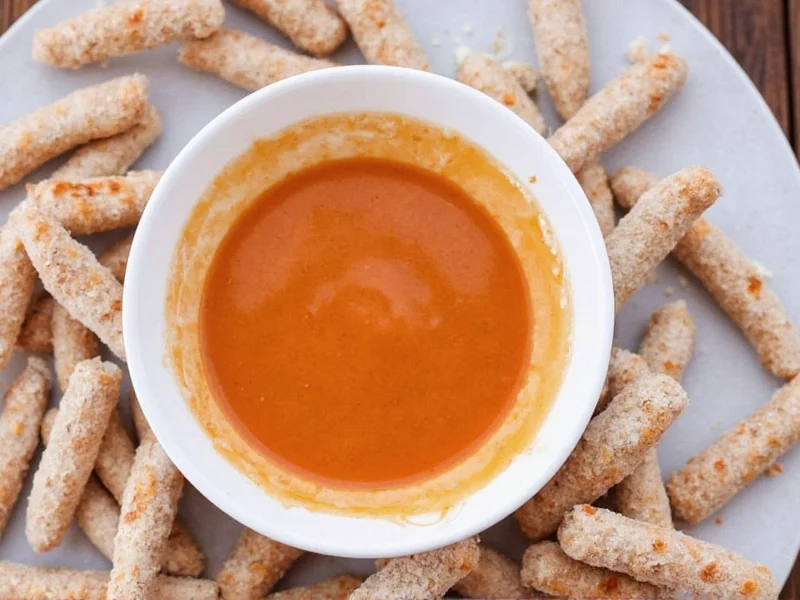Understanding Satay Sauce Freezing Science
Satay sauce's freezeability depends on its ingredient composition. Most traditional satay sauces contain peanut butter, coconut milk, soy sauce, garlic, and spices - components that generally freeze well with proper technique. The primary challenge lies in the emulsion structure; when frozen and thawed, separation can occur due to the fat and liquid components reacting differently to temperature changes.
Commercial satay sauces often contain stabilizers that help maintain consistency after freezing, while homemade versions may require additional attention during the thawing process. The key to successful freezing lies in proper packaging, portion control, and gradual temperature transitions.
Step-by-Step Guide to Freezing Satay Sauce
Follow these professional food preservation techniques to maximize your satay sauce's freezer life:
- Cool completely: Allow freshly made sauce to reach room temperature before freezing (1-2 hours)
- Portion wisely: Divide into recipe-sized portions using ice cube trays or small containers
- Seal properly: Use airtight containers with minimal headspace or vacuum-seal bags
- Label clearly: Include date and contents on each package
- Freeze rapidly: Place in the coldest part of your freezer for quick freezing
| Freezing Method | Best For | Thawing Time | Portion Control |
|---|---|---|---|
| Ice Cube Trays | Homemade sauce, small cooking needs | 2-3 hours | Excellent (single cubes) |
| Airtight Containers | Store-bought sauce, larger portions | 4-6 hours | Good |
| Vacuum Sealing | Long-term storage (up to 3 months) | 6-8 hours | Excellent |
Thawing Techniques for Optimal Quality
How you thaw frozen satay sauce significantly impacts its final texture and usability. Never thaw at room temperature, as this creates food safety risks and accelerates separation.
The refrigerator method provides the best results: transfer your portion to the fridge 12-24 hours before needed. For quicker thawing, place the sealed container in cold water, changing the water every 30 minutes until thawed.
After thawing, you'll likely notice some separation - this is normal. Simply whisk vigorously or blend briefly to re-emulsify the sauce. Adding a teaspoon of warm water while mixing can help restore the original consistency. For cooking applications, gently warming the sauce while stirring often eliminates texture issues completely.
Storage Duration and Quality Timeline
While satay sauce remains safe to eat beyond these timeframes when properly frozen, quality gradually declines:
- 0-1 month: Near-fresh quality, minimal texture changes
- 1-2 months: Slight separation, easily remedied with mixing
- 2-3 months: Noticeable texture changes, best used in cooked dishes
- Beyond 3 months: Significant quality loss, potential freezer burn
For homemade satay sauce without preservatives, aim to use within 2 months for best results. Commercial varieties with stabilizers often maintain quality closer to the 3-month mark.
Variations and Special Considerations
Different satay sauce formulations require specific freezing approaches:
Coconut milk-based sauces: These freeze particularly well due to coconut milk's natural freeze-thaw stability. The high fat content helps maintain emulsion integrity.
Cream or dairy-containing versions: These are more challenging to freeze successfully. Consider omitting dairy before freezing and adding it fresh after thawing.
Chunky satay sauces: Strain out large particles before freezing for smoother texture upon thawing, or expect some texture variation in the final product.
Using Frozen Satay Sauce in Cooking
Frozen satay sauce works exceptionally well in cooked applications where texture is less critical. Add frozen portions directly to stir-fries, curries, or marinades while cooking - the heat helps reconstitute the emulsion naturally.
For dipping sauces or cold applications, allow extra time for proper thawing and thorough re-mixing. You may need to adjust consistency with a small amount of warm water, coconut milk, or broth after thawing.
When using frozen satay sauce in recipes calling for fresh sauce, account for potential slight flavor concentration that occurs during freezing by reducing other seasonings proportionally.
Freezing Alternatives and Complementary Methods
If freezer space is limited or you prefer not to freeze, consider these alternatives:
- Refrigeration: Store-bought sauce lasts 2-3 weeks refrigerated; homemade lasts 5-7 days
- Portion freezing: Freeze in ice cube trays then transfer to bags for space efficiency
- Batch cooking: Make smaller quantities more frequently to minimize storage needs
- Canning: Not recommended for satay sauce due to low acidity and emulsion instability
For frequent satay sauce users, maintaining a small frozen reserve while keeping a refrigerated portion for immediate use provides the best balance of convenience and quality.
FAQ: Freezing Satay Sauce
Does freezing satay sauce change its flavor significantly?
Freezing typically preserves satay sauce flavor well when done correctly. Most people cannot detect flavor differences in properly frozen and thawed sauce used within 2-3 months. The primary change occurs in texture rather than taste, with potential slight separation that's easily remedied through mixing or gentle heating.
Can you freeze satay sauce with added meat or vegetables?
It's best to freeze satay sauce separately from meat or vegetables. Freezing sauce with proteins creates food safety concerns during thawing, as different components thaw at different rates. Freeze the sauce alone, then add fresh proteins when cooking. This approach maintains both food safety and optimal texture for all components.
How do you fix separated satay sauce after thawing?
To fix separated thawed satay sauce, place it in a blender or use a whisk while gradually adding 1-2 teaspoons of warm water or coconut milk. For best results, gently warm the sauce over low heat while stirring constantly until the emulsion reforms. Avoid high heat which can cause further separation. The sauce will typically regain near-original consistency through this process.
Is it safe to refreeze satay sauce after thawing?
No, you should not refreeze satay sauce after it has been completely thawed. Each freeze-thaw cycle degrades texture and increases food safety risks. Instead, portion your sauce into single-use amounts before initial freezing. If you've thawed more than needed, use the excess within 3-4 days or discard it - do not return it to the freezer.











 浙公网安备
33010002000092号
浙公网安备
33010002000092号 浙B2-20120091-4
浙B2-20120091-4